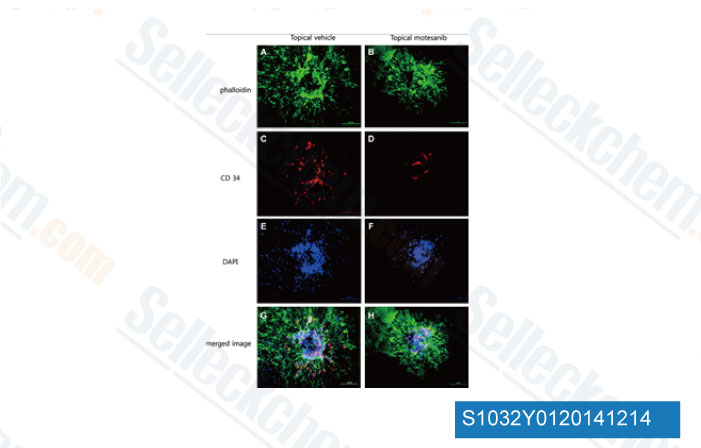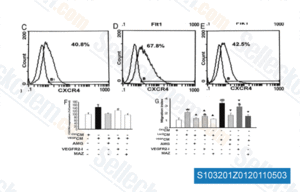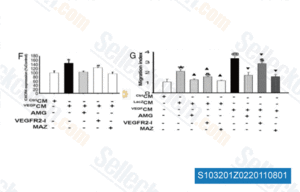|
How to Cite 1. For In-Text Citation (Materials & Methods): 2. For Key Resources Table: |
||
|
Toll Free: (877) 796-6397 -- USA and Canada only -- |
Fax: +1-832-582-8590 Orders: +1-832-582-8158 |
Tech Support: +1-832-582-8158 Ext:3 Please provide your Order Number in the email. We strive to reply to |
Technical Data
| Formula | C22H23N5O.2H3PO4 |
||||||
| Molecular Weight | 569.44 | CAS No. | 857876-30-3 | ||||
| Solubility (25°C)* | In vitro | DMSO | 100 mg/mL (175.61 mM) | ||||
| Water | 19 mg/mL (33.36 mM) | ||||||
| Ethanol | Insoluble | ||||||
| In vivo (Add solvents to the product individually and in order) |
|
||||||
|
* <1 mg/ml means slightly soluble or insoluble. * Please note that Selleck tests the solubility of all compounds in-house, and the actual solubility may differ slightly from published values. This is normal and is due to slight batch-to-batch variations. * Room temperature shipping (Stability testing shows this product can be shipped without any cooling measures.) |
|||||||
Preparing Stock Solutions
Biological Activity
| Description | Motesanib Diphosphate (AMG-706) is a potent ATP-competitive inhibitor of VEGFR1/2/3 with IC50 of 2 nM/3 nM/6 nM, respectively. It shows similar activity against Kit (c-Kit) and is ~10-fold more selective for VEGFR than PDGFR and Ret. This compound is in Phase 3. | |||||||||||
|---|---|---|---|---|---|---|---|---|---|---|---|---|
| Targets |
|
|||||||||||
| In vitro | Motesanib Diphosphate (AMG-706) has broad activity against the human VEGFR family, and displays >1000 selectivity against EGFR, Src, and p38 kinase. It significantly inhibits VEGF-induced cellular proliferation of HUVECs with an IC50 of 10 nM, while displaying little effect at bFGF-induced proliferation with an IC50 of >3,000 nM. This compound also potently inhibits PDGF-induced proliferation and SCF-induced c-kit phosphorylation with IC50 of 207 nM and 37 nM, respectively, but is not effective against the EGF-induced EGFR phosphorylation and cell viability of A431 cells. [1] Althouth displaying little antiproliferative activity on cell growth of HUVECs alone, it significantly sensitizes the cells to fractionated radiation. [2] |
|||||||||||
| In vivo | Motesanib Diphosphate (AMG-706) administration at 100 mg/kg significantly inhibits VEGF-induced vascular permeability in a time-dependent manner. Oral administration of this compound twice daily or once daily potently inhibits, in a dose-dependent manner, VEGF-induced angiogenesis using the rat corneal model with ED50 of 2.1 mg/kg and 4.9 mg/kg, respectively. It induces a dose-dependent tumor regression of established A431 xenografts by selectively targeting neovascularization in tumor cells. [1] When administered in combination with radiation, it displays significant anti-tumor activity in head and neck squamous cell carcinoma (HNSCC) xenograft models. [2] Treatment with this compound also induces significant dose-dependent reductions in tumor growth and blood vessel density of MCF-7, MDA-MB-231, or Cal-51 xenografts. [3] |
Protocol (from reference)
| Kinase Assay: |
|
|---|---|
| Cell Assay: |
|
| Animal Study: |
|
References
|
Customer Product Validation

-
Data from [ J Ocul Pharmacol Ther , 2014 , 10.1089/jop.2014.0023 ]

-
Data from [ Cardiovasc Res , 2011 , 91, 402-11 ]

-
Data from [ Cardiovasc Res , 2011 , 91, 402-11 ]
Selleck's Motesanib Diphosphate (AMG-706) Has Been Cited by 12 Publications
| Anosmin-1-Like Effect of UMODL1/Olfactorin on the Chemomigration of Mouse GnRH Neurons and Zebrafish Olfactory Axons Development [ Front Cell Dev Biol, 2022, 10:836179] | PubMed: 35223856 |
| Preclinical Evaluation of Ixabepilone in Combination with VEGF Receptor and PARP Inhibitors in Taxane-Sensitive and Taxane-Resistant MDA-MB-231 Breast Cancer Cells [ J Pharm Sci, 2022, 111(8):2180-2190] | PubMed: 35700798 |
| Extension of the Mechanistic Tissue Distribution Model of Rodgers and Rowland by Systematic Incorporation of Lysosomal Trapping: Impact on Unbound Partition Coefficient and Volume of Distribution Predictions in the Rat [ Drug Metab Dispos, 2021, 49(1):53-61] | PubMed: 33148688 |
| Cardiac Reprogramming Factors Synergistically Activate Genome-wide Cardiogenic Stage-Specific Enhancers [ Cell Stem Cell, 2019, 25(1):69-86] | PubMed: 31080136 |
| Targeting the Kaposi Sarcoma Herpesvirus ORF 21 tyrosine kinase and viral lytic reactivation by tyrosine kinase inhibitors approved for clinical use. [ J Virol, 2019, 10.1128/JVI.01791-19] | PubMed: 31826996 |
| [ Cancer Res, 2016, ] | PubMed: 27488524 |
| Dual inhibition of EGFR and MET induces synthetic lethality in triple-negative breast cancer cells through downregulation of ribosomal protein S6 [ Int J Oncol, 2015, 47(1):122-32] | PubMed: 25955731 |
| VEGF/SDF-1 promotes cardiac stem cell mobilization and myocardial repair in the infarcted heart. [Tang JM, et al. Int J Cardiol, 2015, 183C:221-231] | PubMed: 25679991 |
| Antiangiogenic Effects of Topically Administered Multiple Kinase Inhibitor, Motesanib (AMG 706), on Experimental Choroidal Neovascularization in Mice [Rho CR, et al. J Ocul Pharmacol Ther, 2015, 31(1):25-31] | |
| Bioluminescent cell-based NAD(P)/NAD(P)H assays for rapid dinucleotide measurement and inhibitor screening [ Assay Drug Dev Technol, 2014, 12(9-10):514-26] | PubMed: 25506801 |
RETURN POLICY
Selleck Chemical’s Unconditional Return Policy ensures a smooth online shopping experience for our customers. If you are in any way unsatisfied with your purchase, you may return any item(s) within 7 days of receiving it. In the event of product quality issues, either protocol related or product related problems, you may return any item(s) within 365 days from the original purchase date. Please follow the instructions below when returning products.
SHIPPING AND STORAGE
Selleck products are transported at room temperature. If you receive the product at room temperature, please rest assured, the Selleck Quality Inspection Department has conducted experiments to verify that the normal temperature placement of one month will not affect the biological activity of powder products. After collecting, please store the product according to the requirements described in the datasheet. Most Selleck products are stable under the recommended conditions.
NOT FOR HUMAN, VETERINARY DIAGNOSTIC OR THERAPEUTIC USE.
